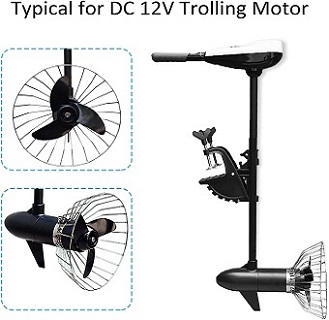A propeller guard is designed to protect the propeller from contact with foreign objects that may cause damage. It’s designed to prevent people from getting hurt by the blades and reduce damage to nearby objects. There are many different types, but they all have one thing in common: they’re really useful for boaters.
There are two types of guards: a fixed guard and an adjustable, or telescopic, guard. Fixed guards can be bolted onto the boat’s transom or mounted onto a surface where there is enough clearance around the propeller. Adjustable guards can also be used when there is not enough space for a fixed guard.
What is the purpose of a propeller guard – Are propeller guards necessary?
In general, the only people who absolutely need propeller guards are racing competitors. These guards are intended to protect the boat and racer if a competitor is hit by your propeller in a race. While many boaters install them for peace of mind or because local laws require them, they aren’t always necessary.
Theoretically, you could have damage to your boat in an accident if you don’t use a guard. For instance, if you’re doing a lot of activities around the water, it’s best to use a guard. However, they are not necessary in all cases and can be expensive.
Propeller guards can keep you from hitting rocks and other hard surfaces near the shoreline. If your boat is hit by these objects, it may end up with a big hole in the hull. This can be very expensive to fix.
Garbage in local waterways can also damage boats if they’re not equipped with a propeller guard. There are a lot of harmful things like glass, metal, and plastic floating around in rivers and oceans that can cause major damage to your boat’s expensive propeller if they get caught in it. What’s worse is if they break off.
A propeller guard also protects you from seagrasses, aquatic weeds, and other underwater objects. What if you hit a massive seaweed or long grass? It could end up wrapped around your propeller. Not only will this damage the engine, but it’s not good for the environment either.
A propeller guard also protects people and pets who are in or near the water.
Do propeller guards affect performance?
Propeller guards can have a negative effect on performance. The added resistance from the guard will make it harder for your boat to move forward and will also decrease your boat’s top speed. For example, if you have a fixed guard on the transom of your boat and are towing another vessel, it will be harder for both boats to move quickly because of the added resistance. The same goes when you’re being towed by a skier or jet ski.
Characteristics of a vessel can also be altered by using a guard. For example, a boat’s turning radius can increase if you use a guard that protrudes far out from the transom. The size and amount of guards may also affect its weight, which also affects your boat’s performance in terms of fuel consumption or speed.
The characteristics of the craft or the performance of the engine can also be altered by using a guard. The speed at which the boat moves through water and the waves that it creates are affected, too.
But some tests show that a guard can have a positive effect on your boat’s performance, depending on the type of craft and design. Lighter vessels get less resistance from a propeller guard than heavier boats.
How much does a propeller guard cost?
Propeller guards range in price from $20 to $200. It may seem like an expensive purchase, but think about how much damage a guard can save you. What’s more important, your boat or a few hundred dollars?
Conclusion
A propeller guard is a safety device that protects the engine and propellers from damage. It also prevents accidental contact with rotating blades which could cause injury to people. The purpose of a propeller guard is to protect both your engine’s gearbox, as well as any person near it. So if you need one for your boat or other watercraft, look for the right one on the market. The right guard can be an essential part of your boat’s safety equipment.

